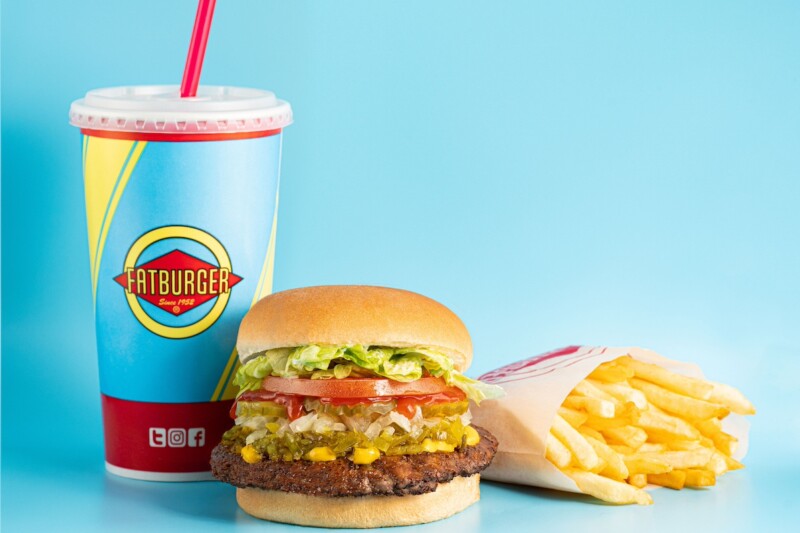More than 80 attendees gathered for Foodservice Equipment Reports’ 2013 Multiunit Foodservice Equipment Symposium, held at Barton Creek Resort & Spa, Austin, Texas, June 10-12. The operator attendees, a mix of equipment specifiers from emerging commercial chains and directors from all of the noncommercial segments, were treated to two days of advanced content on foodservice trends, energy efficiency, LEED foodservice synergies, the sobering rise in water costs, changes in refrigeration technology and regulations and equipment innovation.
Keynoter Joe Pawlak, v.p., Technomic, Inc., Chicago, reports the consumer outlook has brightened since the Great Recession, but growth will continue to be slow (2% Gross Domestic Product in 2013). Concerns about reduced government funding, political stalemates (and subsequent inaction), and the costs of the new healthcare regulations have consumers slightly less optimistic in 2013 than ’12. However, their definition of value is broadening from the Great Recession days. During the downturn, value equated to price + deal; today, value is defined by the sum effect of quality, ambiance, service, price and image, Pawlak says, a combination that takes more finesse and oversight to achieve on the part of operators.
Pawlak went on to discuss food and consumer trends and said operators would do well to pay attention to the Millennial Generation, those born between 1980 and 2000, who will represent 50% of the workforce by 2020 and $40 of every $100 spent in restaurants over the next 10 years.
Dr. Jian Zhang, PhD, Pacific Northwest National Laboratories, Richland, Wash., shared how QSRs can achieve up to 50% energy savings with changes to the building envelope, HVAC, equipment packages, refrigeration and more. FER reported on the PNNL’s study in the December 2012 issue.
Attendees received a LEED Rating Systems and Certification orientation from David Zabrowski, lead engineer for Pacific Gas & Electric’s Food Service Technology Center, San Ramon, Calif. In a real-world example of the results of LEED on a Taco Bell/KFC co-brand unit, changes to equipment and building systems resulted in huge reductions in energy usage: The unit’s exhaust consumed 74% less energy than that of a standard unit, yet the test restaurant was doing 40% more transactions.
In a second presentation, “Specifying the Energy-Efficient Kitchen,” Zabrowski addressed the problem inherent in purchasing equipment for short-term “lowest price” vs. long-term ROI on energy efficiency and lifecycle. “Better engineering, better materials and better design make appliances more efficient,” Zabrowski said. “And efficient equipment produces more food more uniformly, works cooler and more quietly and lasts longer while consuming less energy over its lifespan.”
On day two of the symposium, water—its rising cost and how to reduce use—was a main topic. Since 1983, the cost of electricity has risen 190%, the Consumer Price Index about 240% and fuel (oil) close to 350%, but water has them all beat with a 410% cost increase. “Between 2007 and 2011 alone, water prices have gone up 27% in the U.S.,” said Bill Hoffman, sr. technical advisor with Water Management Inc., Austin, Texas. In his presentation, “Water, the Oil of the 21st Century,” Hoffman shared strategies for dramatically reducing water usage in foodservices, both indoors through better equipment selection—restroom equipment, steamers, warewashers and more—and outdoors with landscaping strategies.
Craig Raney, dir. of marketing for Emerson Climate Technologies, Sydney, Ohio, updated the audience on shifting technologies in refrigeration, including the latest compressor styles for roof-package and air-conditioning equipment, ice and beverage machines, walk-in coolers and freezers and reach-in and display refrigeration. Raney discussed which refrigerants are available for new systems but said there is no clear path to a single replacement. Instead, he says, we’ll see a continuation of refrigerant changes with a movement to those with the lowest impact on global warming.
In the final session, FER welcomed three judges from the National Restaurant Association’s Kitchen Innovations Award program, which awards innovations in foodservice equipment and systems. Robert Forrester, principal, Restaurant Industry Solutions, Council Grove, Kan.; Dan Bendall, FCSI, principal, FoodStrategy Inc., Rockville, Md.; and Aaron LaMotte, director, Sodexho Performance Interiors, Gaithersburg, Md., shared highlights from nine years of award selections. Among the trends: equipment with significant reduction in energy and water use, operational simplicity, self-diagnostics and smaller footprints. FER asked the panelists to name equipment changes they would recommend the audience make immediately, and they suggested updating any warewashers more than 10 years old, installing demand-control ventilation in exhaust systems and exploring induction, among others.
Expect more advanced content when FER hosts MUFES 2014 for commercial chains, also at Barton Creek Resort & Spa, Jan. 25-27.
Reserve Your Spot!
MUFES for Chain Operators
Jan. 25-27, 2014
Barton Creek Resort & Spa, Austin, Texas
Contact Christine Palmer at cpalmer@fermag.com“””
More than 80 attendees gathered for Foodservice Equipment Reports' 2013 Multiunit Foodservice Equipment Symposium, held at Barton Creek Resort & Spa, Austin, Texas, June 10-12. The operator attendees, a mix of equipment specifiers from emerging commercial chains and directors from all of the noncommercial segments, were treated to two days of advanced content on foodservice trends, energy efficiency, LEED foodservice synergies, the sobering rise in water costs, changes in refrigeration technology and regulations and equipment innovation.
Keynoter Joe Pawlak, v.p., Technomic, Inc., Chicago, reports the consumer outlook has brightened since the Great Recession, but growth will continue to be slow (2% Gross Domestic Product in 2013). Concerns about reduced government funding, political stalemates (and subsequent inaction), and the costs of the new healthcare regulations have consumers slightly less optimistic in 2013 than '12. However, their definition of value is broadening from the Great Recession days. During the downturn, value equated to price + deal; today, value is defined by the sum effect of quality, ambiance, service, price and image, Pawlak says, a combination that takes more finesse and oversight to achieve on the part of operators.
Pawlak went on to discuss food and consumer trends and said operators would do well to pay attention to the Millennial Generation, those born between 1980 and 2000, who will represent 50% of the workforce by 2020 and $40 of every $100 spent in restaurants over the next 10 years.
Dr. Jian Zhang, PhD, Pacific Northwest National Laboratories, Richland, Wash., shared how QSRs can achieve up to 50% energy savings with changes to the building envelope, HVAC, equipment packages, refrigeration and more. FER reported on the PNNL's study in the December 2012 issue.
Attendees received a LEED Rating Systems and Certification orientation from David Zabrowski, lead engineer for Pacific Gas & Electric's Food Service Technology Center, San Ramon, Calif. In a real-world example of the results of LEED on a Taco Bell/KFC co-brand unit, changes to equipment and building systems resulted in huge reductions in energy usage: The unit's exhaust consumed 74% less energy than that of a standard unit, yet the test restaurant was doing 40% more transactions.
In a second presentation, "Specifying the Energy-Efficient Kitchen," Zabrowski addressed the problem inherent in purchasing equipment for short-term "lowest price" vs. long-term ROI on energy efficiency and lifecycle. "Better engineering, better materials and better design make appliances more efficient," Zabrowski said. "And efficient equipment produces more food more uniformly, works cooler and more quietly and lasts longer while consuming less energy over its lifespan."
On day two of the symposium, water—its rising cost and how to reduce use—was a main topic. Since 1983, the cost of electricity has risen 190%, the Consumer Price Index about 240% and fuel (oil) close to 350%, but water has them all beat with a 410% cost increase. "Between 2007 and 2011 alone, water prices have gone up 27% in the U.S.," said Bill Hoffman, sr. technical advisor with Water Management Inc., Austin, Texas. In his presentation, "Water, the Oil of the 21st Century," Hoffman shared strategies for dramatically reducing water usage in foodservices, both indoors through better equipment selection—restroom equipment, steamers, warewashers and more—and outdoors with landscaping strategies.
Craig Raney, dir. of marketing for Emerson Climate Technologies, Sydney, Ohio, updated the audience on shifting technologies in refrigeration, including the latest compressor styles for roof-package and air-conditioning equipment, ice and beverage machines, walk-in coolers and freezers and reach-in and display refrigeration. Raney discussed which refrigerants are available for new systems but said there is no clear path to a single replacement. Instead, he says, we'll see a continuation of refrigerant changes with a movement to those with the lowest impact on global warming.
In the final session, FER welcomed three judges from the National Restaurant Association's Kitchen Innovations Award program, which awards innovations in foodservice equipment and systems. Robert Forrester, principal, Restaurant Industry Solutions, Council Grove, Kan.; Dan Bendall, FCSI, principal, FoodStrategy Inc., Rockville, Md.; and Aaron LaMotte, director, Sodexho Performance Interiors, Gaithersburg, Md., shared highlights from nine years of award selections. Among the trends: equipment with significant reduction in energy and water use, operational simplicity, self-diagnostics and smaller footprints. FER asked the panelists to name equipment changes they would recommend the audience make immediately, and they suggested updating any warewashers more than 10 years old, installing demand-control ventilation in exhaust systems and exploring induction, among others.
Expect more advanced content when FER hosts MUFES 2014 for commercial chains, also at Barton Creek Resort & Spa, Jan. 25-27.
Reserve Your Spot!
MUFES for Chain Operators
Jan. 25-27, 2014
Barton Creek Resort & Spa, Austin, Texas
Contact Christine Palmer at cpalmer@fermag.com"""
RELATED CONTENT
- Advertisement -
- Advertisement -
- Advertisement -
TRENDING NOW
- Advertisement -
- Advertisement -
- Advertisement -


